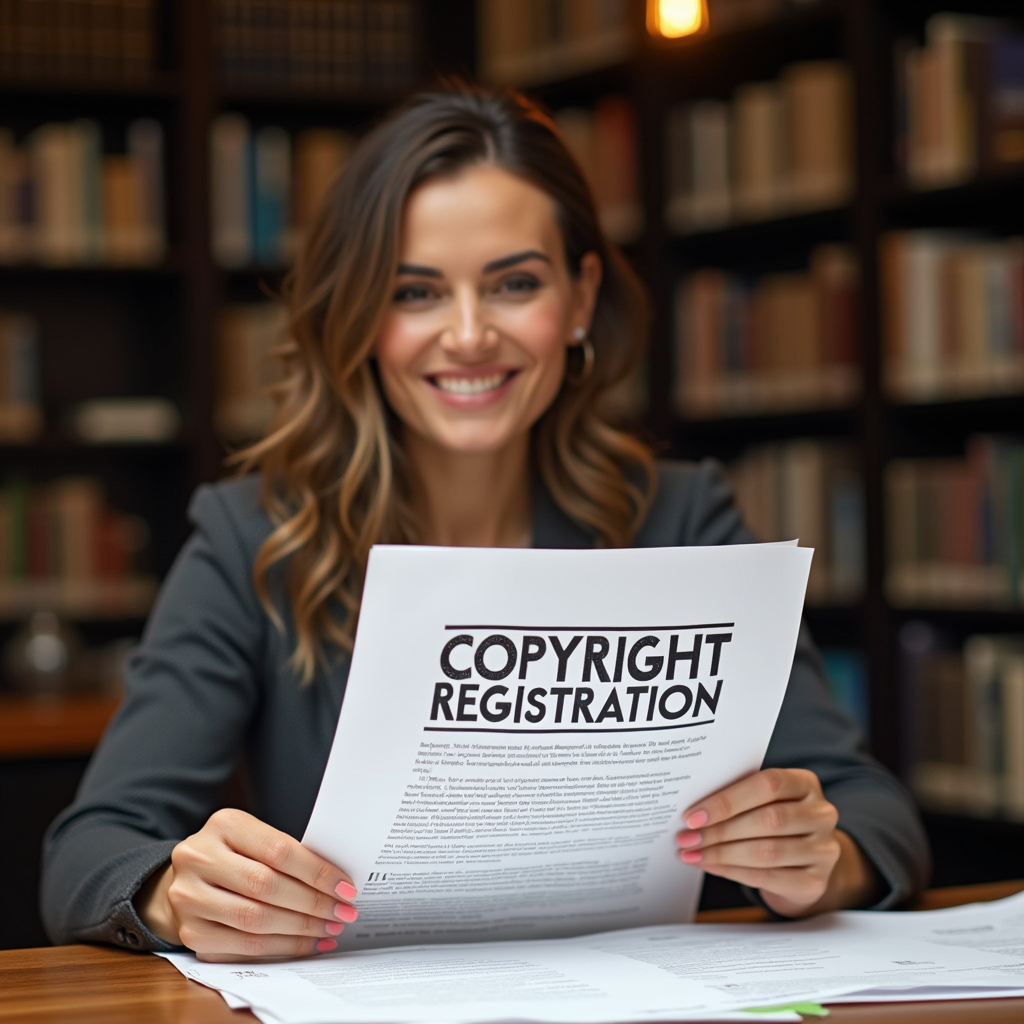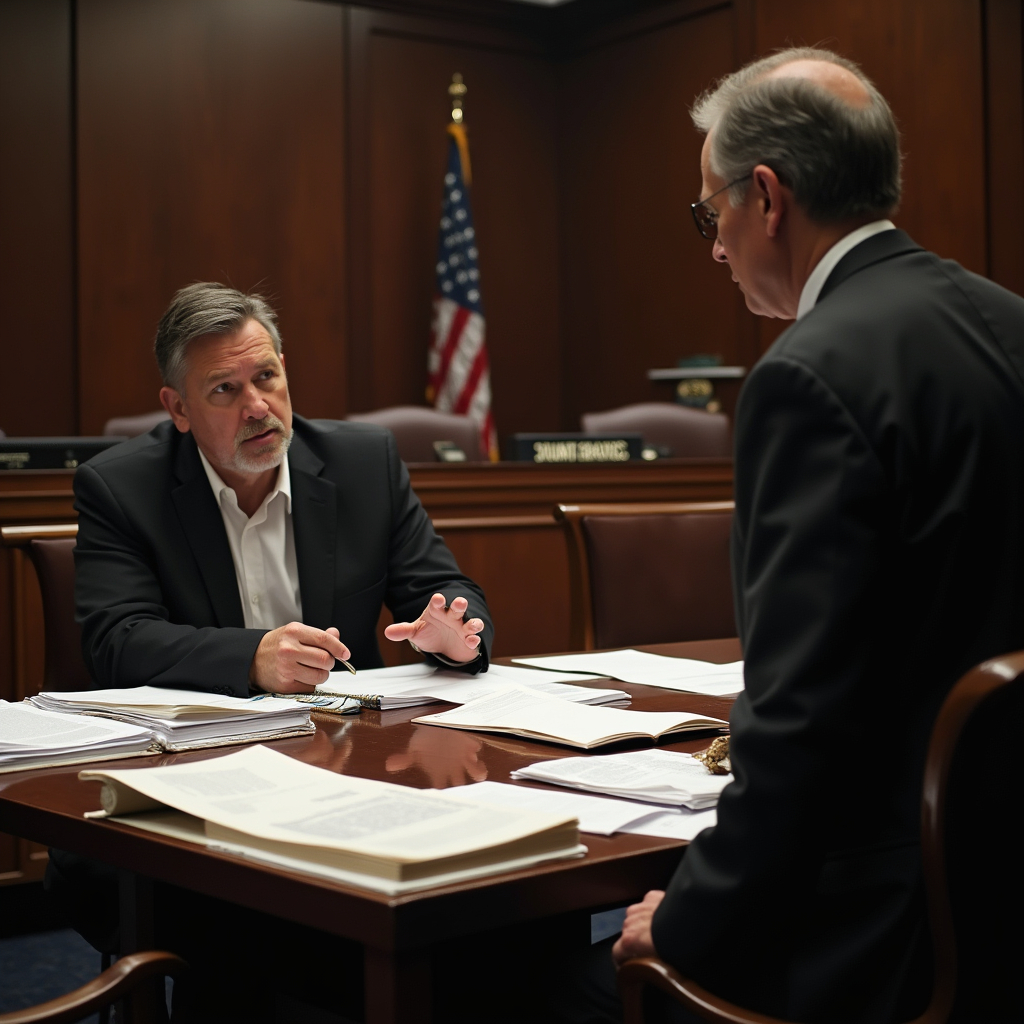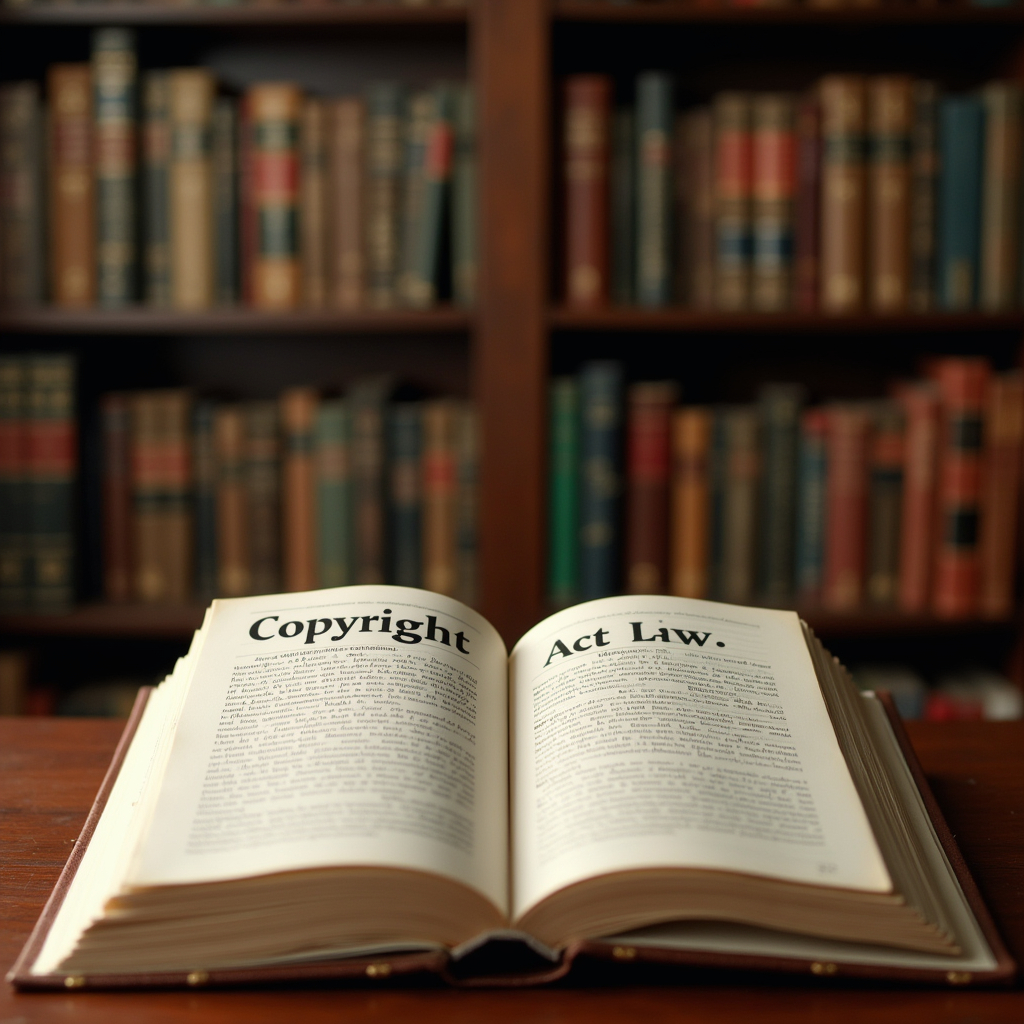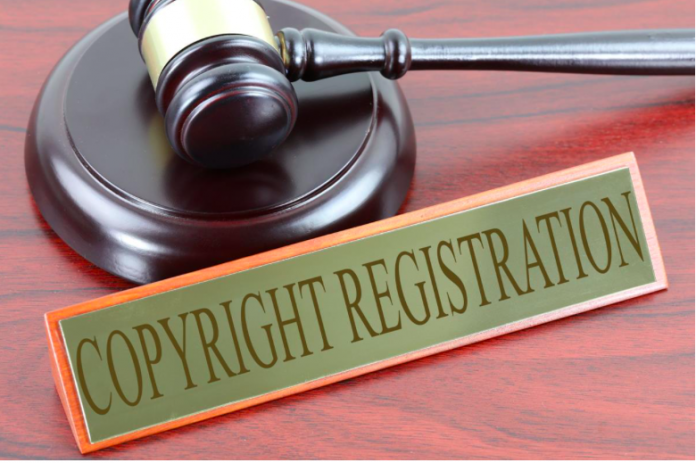This article is written by Srishti Kaushal and further updated by Sakshi Kuthari. This article discusses in detail the procedure for copyright protection, the need and importance of copyright registration. It provides a list of documents required for copyright registration and persons who are eligible for copyright registration. It explains in detail the judgements relating to copyright registration.
Table of Contents
Introduction
What if you write a new book? It is a literary masterpiece that can fetch you a lot of money, but you are scared and wonder what would happen if on releasing it, people copy it and sell it under their name? What do you need to do to prevent this and protect your rights?
The answer is easy. You need to get your work registered with the Registrar of copyright. Copyright is a right given by the law to the creators of original work in the areas of literature, drama, music, art etc. A registered copyright legally protects your work and prevents its unauthorised usage.
Between 2023 and 2024, there were around 36,000 copyright applications that were received by the Intellectual Property Office. This is notably less than the approximate number of 45,000 copyright applications that were finally disposed of. This discrepancy shows that the office has taken the initiative to streamline the process of copyright registration. To avoid the disposal of copyright applications, you must understand the requirements for copyright registration and what the process entails.
In this article, we will understand the types of work you can obtain a copyright for, the people who are entitled to get a copyright for a piece of work, the essential documents you must have when you are trying to get a copyright and the procedure involved in the copyright registration process. It also provides instructions for filing copyright registration through an online mode.
Before we discuss the procedure pertaining to copyright registration, let’s have a brief overview of the term ‘copyright, followed by an idea as to why registering a copyright becomes essential.
Meaning of copyright
The expression ‘copyright’ is a unique kind of intellectual property. The right which a person acquires in a work, which is the result of his intellectual labour, is called his copyright. The primary function of copyright law is to protect the fruits of a man’s work, labour, skill or test from being taken away by other people. Copyright according to Black’s Law Dictionary is the right in literary property as recognised and sanctioned by positive law.
It is an intangible, incorporeal right granted to the author or the originator of certain literary or artistic production whereby he is invested for a specified period with the sole and exclusive privilege of multiplying copies of the same and publishing and selling them.
Need for copyright registration
From the above discussion, the meaning of the term ‘copyright’ is clear. Now, let’s understand what exactly registration of copyright means. In simple layman’s language, copyright registration is securing the work of the creator, thereby granting legal protection. This registration gives exclusive rights to the creator of the work. The exclusive rights and strict legal protection that the creator gets from the registration are the foremost reasons for registering a copyright.
Copyright registration protects, recognises and encourages the labour, skill and capital of the creator. The Hon’ble Supreme Court in Eastern Book Company & Ors. vs. D.B. Modak & Anr. (2007) held that the object of the Indian Copyright Act, 1957 is to protect the author of the copyright work from an unlawful exploitation of his work by others. It is pertinent to note that this object is the most fruitful when the copyright is registered.
It gives the copyright owner the right to stop others from exploiting the work without the consent of the owner of the copyright. After a copyright is registered, it presents a balance between the interests and rights of the author and that of the public in protecting the public domain.
Let us now understand the procedure of copyright, from the filing of copyright registration application online to get the same entered in the register of copyrights and all the other relevant provisions pertaining to the procedure of registration of copyright.
Procedure for registering a copyright
Let us explore how you can register your original work with the copyright registrar under Chapter X of the Copyright Act, 1957 (hereinafter referred to as Act of 1957) and Rules 69 to 74 of the Copyright Rules, 2013. Once we are clear with the steps of applying for copyright registration online, we will discuss the essential documents needed for registration and who is entitled to get it registered using copyright.
It is pertinent to note that, in the early period when people were not well aware of the technology and online procedures, a person interested in registering a copyright, could also file the essential documents physically at the head office of copyright in New Delhi or post it to the New Delhi Office, however, presently the most feasible way of registering a copyright, is through submitting an online application form.

Instruction for filing copyright registration form online
Copyright registration can be done by filing the copyright registration form online. The instructions are as follows:
- The copyright applicant enters a valid user-id and password to log in;
- In case the copyright applicant is not registered, then “Click on NewUser Registration”;
- For future use of the note down user-id and password;
- Once the applicant has logged in, then he/she should click on to link “Click for online Copyright Registration”;
- In the below-mentioned steps, the online “Copyright Registration Form” is to be filled:
- Form XIV should be filled. Then, press the SAVE button to save the details entered and press Step 2 to move to the next step;
- The signature of the copyright applicant is to be scanned in 512 KB and should be kept ready for uploading;
- Then the statement of particulars should be filled up. Following that press the SAVE button to save the details entered. Next, press Step 3/4 to move to the next step;
- The applicant should then fill up the “Statement of Further particulars”. This form is applicable for “literary/ dramatic, musical, artistic and software” works. Then press the SAVE button to save the details entered. After that press Step 4 to move to Next Step.
- By means of the Internet Payment gateway, the payment is done.
- Once the form is submitted successfully, a Diary Number is generated. (Please note it for future reference).
- The artistic work is uploaded in pdf/jpg format, sound recording work is uploaded in mp3 format and literary/ dramatic, music and software work is uploaded in pdf format. The pdf format should be less than 10 MB.
- Lastly, take a print of 1 hard copy of the “Acknowledgement Slip” and a print of 1 hard copy “Copyright Registration Form”, and post it to this address:
Copyright Division
Department For Promotion of Industry and Internal Trade
Ministry of Commerce and Industry
Boudhik Sampada Bhawan,
Plot No. 32, Sector 14, Dwarka, New Delhi-110078
Email Address: copyright[at]nic[dot]in
Telephone No.: 011-28032496
Essential documents required to complete the procedure of copyright registration
Before we discuss the procedure which you must follow if you want to get your work registered under the Act of 1957, we must look into the essential documents that you require for smooth registration.
Though there are some special requirements for different kinds of work, broadly the essential requirements are:
- 3 copies of the work if the work is published;
- If the work is not published, then 2 copies of manuscripts;
- If the application is being filed by an attorney, then special power of attorney or vakalatnama signed by the attorney and the party;
- Authorization in respect of work, if the work is not the work of the applicant;
- Information regarding the title and language of the work;
- Information regarding the name, address and nationality of the applicant;
- Applicant must also provide his mobile number and email address;
- If the applicant is not the author, a document containing the name, address and nationality of the author, and if the author is deceased, the date of his death;
- If the work is to be used on a product, then a no-objection certificate from the trademark office is required;
- If the applicant is other than the author, a no-objection certificate from the author is required. In this case, an authorization of the author may also be required;
- If a person’s photo appears in the work, then a no-objection certificate from such a person is required;
- In case the publisher is not the applicant, a no-objection certificate from the publisher is required;
- If the work is published, the year and address of the first publication are also required;
- Information regarding the year and country of subsequent publications;
- If a copyright is for software, then source code and object code are also required.
At this point, it is pertinent to note that, once a copyright is registered, a register is kept for maintaining the details of the same. Let’s have a look at the below-mentioned provisions that are relevant for understanding the registration procedure of copyright, in its entirety.

Register of copyrights
In order to maintain complete information pertaining to the works that have been copyrighted, a register of copyright is maintained, by the Registrar. According to Section 44 of the Act of 1957, there is a register of copyrights kept at the Copyright Office. The register of copyrights contains names or titles of works and the names and addresses of authors, publishers, and owners of copyright and such other particulars as may be prescribed. The intention behind the enactment of this section is not to make registration compulsory or mandatory for the purpose of enforcement of copyright. It is not obligatory for an author to get the copyright registered under Section 44 for the purpose of acquiring the rights conferred by it. It only raises a presumption that the person shown in the registration is the actual author.
Rule 69(1) of the Copyright Rules, 2013 provides that the register of copyright shall be kept in physical and electronic form in six parts, namely:
- Part I: Literary works other than computer programs, tables and compilations including computer databases and dramatic works;
- Part II: Musical works;
- Part III: Artistic works;
- Part IV: Cinematograph films;
- Part V: Sound recordings;
- Part VI: Computer programs, tables and compilations including computer databases.
Rule 69(2) of the Copyright Rules, 2013 provides that the register of copyright shall contain the particulars specified in Form – XIII of the First Schedule of Copyright Rules, 2013.
Entries in the Register of copyrights
It is to be noted that in order to get the name of the copyright entered in the register of Copyrights, an Application under Section 45(1) of the Act of 1957 can be made. The aforementioned section provides that the author or publisher or the owner of the copyright or other person interested in the copyright in any work may make an application to the Registrar of copyrights for entering particulars of the work in the register of copyrights.
Section 45(2) of the Act of 1957 provides that when the Registrar of copyrights receives an application in respect of any work, he may, after holding such inquiry as he deems fit, enter the particular work in the register of copyrights.
Rule 70 of the Copyright Rules, 2013 provides details relating to the application for registration of copyright. They are as follows:
- Rule 70(1): Form- XIV shall be filled by the applicant, for the purpose of registration of copyright. For updating any details in the register, Form-XV shall be filled.
- Rule 70(2): Application for registration of copyright must relate to a single work only and should be submitted along with the fee specified in the Second Schedule of Copyright Rules, 2013.
- Rule 70(3): Every application must be signed only by the applicant, who may either be the author or the right-holder. In case, an application is filed by the copyright owner, it shall be accompanied by a No-objection Certificate.
- Rule 70(4): Every application to register an unpublished work must be accompanied by two copies of the work.
- Rule 70(5): Every application to register a computer programme must be accompanied by both the source code and the object code.
- Rule 70(6): Every application for the registration of an artistic work that is used or capable of being in connection with any goods or services must include a statement to this effect. Additionally, the application must be accompanied by a certificate from the Registrar of Trade Marks, as referred to in Section 3 of the Trade Marks Act, 1999, confirming that no trademark identical to or deceptively similar to the artistic work has been registered under that Act in the name of anyone other than the applicant, or that no such application has been made by anyone other than the applicant.
- Rule 70(7): Every application for the registration of an artistic work that can be registered as a design under the Design Act, 2000, must include an affidavit stating the following:

- The work has not been registered under the Design Act, 2000; and
- The work has not been applied to an article through an industrial process and reproduced more than fifty times.
- Rule 70(8): Application can be submitted to the Copyright Office either in person, by post, or through the online filing facility available on the Copyright Office’s website.
- Rule 70(9): The applicant must notify all individuals who claim an interest in the copyright subject matter or dispute the applicant’s rights.
- Rule 70(10): If no objection to the registration is received by the Registrar of copyrights within thirty days of receiving the application, and the Registrar is satisfied with the accuracy of the provided details, the Registrar will record the particulars in the register of copyrights.
- Rule 70(11): If the Registrar of copyrights receives any objections to the registration within the specified timeframe, or if the Registrar is not satisfied with the accuracy of the application details, they may, after conducting an inquiry deemed appropriate, record the particulars of the work in the register of copyrights as they may consider necessary.
- Rule 70(12): The Registrar of copyrights must provide an opportunity for a hearing before rejecting any application for the registration of a work.
- Rule 70(13): The registration process is considered complete only when a copy of the entries in the register of copyrights is signed and issued by the Registrar of copyrights or by a Deputy Registrar of copyrights to whom such authority has been delegated.
- Rule 70(14): The Registrar of copyrights shall, as soon as possible, send a copy of the entries in the Registrar of copyrights to the relevant parties, wherever practicable.
Indexes
Section 46 of the Act of 1957 provides that the Copyright Office shall also maintain indexes of the register of copyrights as prescribed. Rule 72(1) of the Copyright Rules, 2013 states that the Copyright Office shall maintain the following indexes, both in physical and electronic formats, for each section of the register of copyrights:
(i) a General Author Index;
(ii) a General Title Index;
(iii) an Author Index for works in each language; and
(iv) a Title Index for works in each language.
Rule 72(2) of the Copyright Rules, 2013 states that each index shall be organised alphabetically in card format.
Form and inspection of the register
Section 47 of the Act of 1957 provides that the Registrar of copyrights shall at all reasonable times be open to inspection, and any person shall be entitled to take copies of, or make extracts from, such register or indexes on payment of such fee and subject to such conditions as may be prescribed.
Rule 73 of the Copyright Rules, 2013 provides that the register of copyrights and its indexes shall be accessible for inspection by any person during reasonable hours, in the manner and under the conditions specified by the Registrar of copyrights.
Rule 74(1) of the Copyright Rules, 2013 provides that any individual may obtain copies of or make extracts from the register of copyrights or its indexes by paying the fee prescribed in the Second Schedule, subject to supervision arranged by the Registrar of copyrights.
Rule 74(2) of the Copyright Rules, 2013 provides that upon receiving an application and payment of the fee specified in the Second Schedule, the Registrar of copyrights shall provide a certified copy of the entries in the register of copyrights and its indexes.
Register of copyrights to be prima facie evidence of particulars entered therein
Section 48 of the Act of 1957 states that the register of copyrights shall serve as prima facie evidence of the details recorded within it. Documents that are certified by the Registrar of copyrights and bear the seal of the Copyright Office, and which purport to be copies of any entries or extracts from the Register, shall be admissible in court as evidence without the need for further proof or production of the original.
Correction of entries in the Register of copyrights
Section 49 of the Act of 1957 provides that the Registrar of copyrights may, under prescribed circumstances and conditions, amend or modify the Registrar of copyrights by:
- Correcting any errors in names, addresses, or other details; or
- Rectifying any other mistakes resulting from accidental slips or omissions.
Rule 71(1) of the Copyright Rules, 2013 provides that the Registrar of copyrights may, either on their own initiatives or in response to an application from an interested party, amend or alter the register of copyrights for entries specified in Section 49 of the Act of 1957. Before making such changes, the Registrar shall, whenever feasible, provide the affected person with an opportunity to contest the proposed amendment or alteration and will notify them of the changes made.
Rule 71(2) of the Copyright Rules, 2013 additionally provides that the Registrar of copyrights shall rectify entries in the register of copyrights following an order issued by the Copyright Board based on an application made by the Registrar under Section 50 of the Act of 1957.

Rectification of register by High Court
Section 50 of the Act of 1957 provides that the High Court, upon application by the Registrar of copyrights or any aggrieved party, may order the rectification of the Registrar of copyrights by:
- Including any entry that was wrongfully omitted from the register;
- Removing any entry that was incorrectly made or remains in the register; or
- Correcting any errors or defects in the register.
Entries in the Register of copyrights to be published
Under Section 50A of the Act of 1957 it is provided that the Registrar of copyrights shall publish every entry made in the register of copyrights, as well as any corrections made under Section 49 and rectification order under Section 50, in the Official Gazette or in such other manner as he may deem fit.
Till now, it is clear how an applicant can submit an application for copyright registration through online mode, followed by the after steps of the registration of copyrights, like an entry in the register of copyrights, its indexes, inspection and correction.
Till now, we have discussed the detailed provisions of registration of copyright, now let’s understand a very crucial point while we decide whether we should get our copyright registered, i.e., the works that can be registered using copyright.
Overview of what work can be registered using a copyright
Section 13 of the Act of 1957 enumerates a class of works in which copyright subsists. According to Section 13(1) of the Act of 1957, the following are the works in which copyright subsists:
- Original literary, dramatic, musical and artistic works;
- Cinematograph films; and
- Sound recordings.
According to Section 2(y) of the Act of 1957, “work” means any of the following works, namely:
(i) a literary, dramatic, musical or artistic work;
(ii) a cinematograph film;
(iii) a sound recording.
So, Section 2(y) of the said Act includes the following six kinds of works:
| Type of work | Description |
| Literary work [Section 2(o)] | A “literary works” means any work enumerated under Section 2(o) of the Act of 1957. |
| Dramatic work [Section 2(h)] | A “dramatic work” means any work enumerated under Section 2(h) of the Act of 1957. |
| Musical work [Section 2(p)] | A “musical work” means any work enumerated under Section 2(p) of the Act of 1957. |
| Artistic works [Section 2(c)] | An “artistic work” means any work enumerated under Section 2(c) of the Act of 1957. |
| Cinematograph films [Section 2(f)] | A “cinematograph film” means any work enumerated under Section 2(f) of the Act of 1957. |
| Sound recording [Section 2(xx)] | A “sound recording” means a work enumerated under Section 2(xx) of the Act of 1957. |
Some illustrations of copyright in literary work which cannot be registered
| Illustration | Description |
| No copyright in a word | A single word cannot be a subject of copyright. |
| No copyright in script form | The ownership of copyright does not always exist in the person who came up with the concept (screenplays or scripts), instead, it exists in the person who puts the concept into action. |
| Commonplace information not copyrightable | When matter is taken out of common information available to all, there can be no copyright in such a work. |
| Judicial pronouncements and law reports of judicial proceedings | The reproduction or production of the judgements or orders would not constitute an infringement of copyright. |
| Historical works | Historical works are not copyrightable per se. |
| New editions of existing work | For the purpose of creating a copyright in a new edition, there must be evidence of labour skill and capital investment to give a new face to the existing work. |
| No copyright exists in work done during the course of employment | Section 17(b) and (c) of the Act of 1957 relates to “work for hire”. It provides In the absence of a written agreement, the employer is considered the original owner of the copyright where an author creates a work while under the employment of service or apprenticeship. |

Who can register a piece of work with registrar of copyrights
If you made a new painting using your mind and talent, can anyone get a copyright for it? Of course not. Let’s see who is legally entitled to get a copyright for his/her work.
The following people are entitled to submit an application to get a copyright and then subsequently get it registered if they wish to;
| Author | The author of the work is:Either the person who actually created the work, orIf made during the scope of employment, then the employer. This is considered as ‘work made for hire’.Such an author is legally allowed to get a copyright for his/her work. |
| Owner of exclusive rights | The copyright law can grant a person exclusive rights to control and use and distribution of an original work. These rights include:the right to reproduce or make copies of the original work;the right to distribute copies of the work;the right to publicly display the work;the right to perform the work; and the right to alter the work and make derivatives of the original work. |
| Copyright claimant | This is either:The author; orA person or an organisation that has obtained ownership rights from the author through a written contract, will, etc. |
| Authorised agent | This refers to any person authorised to act on behalf of either:The author; orThe copyright claimant; orThe owner of an exclusive right. |
It must also be mentioned here that there is no age bar for getting a copyright and a minor is also entitled to register a copyright. This is because copyright law recognises creativity and understands that age cannot be a restriction on creativity. Also, in case the work is created by two or more people then the creators of the work are co-owners unless they have agreed otherwise.
Is the registration of copyright mandatory
Registration of copyright is optional, and not mandatory. It is not a prerequisite condition for claiming copyright in a work. Copyright emanates from the moment of the creation of works. There is no section in the Act of 1957, to the effect that the author can have no right or remedy unless the work is registered. The Hon’ble Allahabad High Court in Nav Sahitya Prakash And Ors. vs. Anand Kumar And Ors. (1980) held that the registration of copyright only raises a presumption in favour of the person shown as the author therein. No provision in the Act of 1957 deprives an author of his rights thereunder merely for non-registration of his right.
The Hon’ble Bombay High Court in Asian Paints (I) Ltd. vs Jaikishan Paints & Allied Products (2002) held that under Sections 46 & 48 of the Act of 1957, registration is optional and not compulsory.
Consequences of not registering a copyright
Although registration of copyright is not mandatory, however, non-registration of copyright debars the copyright owner from claiming some extended benefits as compared to a registered copyright owner. If a copyright is not registered, no person can be stopped from exploiting the work of the author. If the copyright is not registered the author does not have the right to prevent alteration, destruction and other actions that may damage the reputation of the author. A person whose copyright work is registered gets the following benefits as compared to a non-registered owner. They are as follows:
- A non-registered copyright work cannot be used as a public record at the time of claiming copyright;
- At the times when legal disputes arise, a non-registered copyright cannot be used to serve as evidence in court that the work is protected by copyright;
- A person whose copyright is not registered cannot file a suit for copyright infringement and be eligible for statutory damages and the fees of the attorney;
- Non-registered copyright does not provide legal protection so as to ensure that the creator’s work is preserved and documented for the life of the copyright, hence, not protecting the intellectual property of the creator;
- An author’s work which is not registered, cannot prevent their work from being copied or used without their permission;
- In case a copyright is not registered, it wastes the author’s time and money in the long run, as it eliminates the need for a court to determine the validity of the claim.
Thus, creators and owners of copyrights should consider registering their copyrights to ensure that their rights are protected.

Conclusion
The procedure for registration of copyright under the Act of 1957, plays an important role in protecting the rights of creators by legally recognising their work. It not only safeguards the rights of copyright owners but also promotes creativity. Creativity is the most essential requirement to enable progress in society. Encouraging creativity enables the economic and social development of a society. Copyright protects the creativity of people and becomes a source of motivation for artists, authors, etc.
Registering your work with the Registrar of Copyrights provides you with the right to reproduce it, the right to adapt the work, the right to paternity and the right to distribute the work. Though it looks easy, the copyright registration process is a lengthy but important process which can take up to 10 to 12 months. It is always advisable to get your copyright registered.
It serves as prima facie evidence in legal disputes, making it easier to enforce rights. Once your copyright is registered, it becomes much easier to move to the court and get the person who illegally copied your work punished. To provide adequate protection to copyright holders, the Copyright Act, 1957 provides under Section 63 of the Act of 1957, imprisonment for not less than six months and may extend to three years and a fine of not less than Rs. 50,000 and may extend to Rs. 2,00,000 in case your right is infringed by someone.
Frequently Asked Questions (FAQs)
What is the fundamental objective of copyright protection?
The foundation Indian Copyright Law, which is of English origin and provenance has a moral basis and is based on the Eighth Commandment, “Thou Shalt not Steal” (as held by the Hon’ble Supreme Court in R.G. Anand vs. M/S. Delux Films & Ors. (1978). The fundamental objective of both the Indian and English copyright laws has always been the protection of the fruits of a man’s skills, labour, and effort from appropriation by others.
By what mode should an application for copyright registration be submitted?
An application for copyright registration can be submitted, either online, by post, or in person.
Is a no objection certificate (NOC) mandatory under proviso of Section 45(1) of the Act of 1957, for obtaining a copyright registration of artistic works relating to goods and services?
The Hon’ble Delhi High Court in Mohd Ershad Sole Proprietor Ek Agencies vs. Registrar Of Copyrights & Ors. (2022) observed for a person to obtain registration of copyright of an artistic work which is being used or is capable of being used in respect of any goods and services, the no-objection certificate (NOC) is mandatorily required to be obtained under proviso of Section 45(1) of the Act of 1957.
Can multiple copyright works be registered in one application?
No, each application should be for a single work only.
What happens if someone objects to copyright registration?
The Registrar of Copyrights will consider the objections and may hold an inquiry before proceeding with the registration.
Does copyright apply to titles and names?
Copyright generally does not cover titles, names, short word combinations, slogans, brief phrases, methods, plots, or factual information on their own. Moreover, copyright does not extend to ideas or concepts. To be eligible for copyright protection, a work must be original.
What is the effective date of registration of copyright?
Copyright registration is effective on the date the Copyright Office receives all the required elements in acceptable form. The time the Copyright Office requires to process an application varies, depending on the amount of material the office is receiving.
What is the duration of copyright protection?
Chapter V of the Act of 1957 provides for the term of copyright protection. It subsists for the lifetime of the author (in the case of literary, artistic, dramatic, and musical work) until sixty years from the beginning of the calendar year following the year in which the author dies.
What is the doctrine of fair dealing?
The doctrine of fair dealing is the use of copyrighted material without the permission of the author. A person has a right to use a copyrighted work if it does not amount to infringement. A fair dealing with a literary, dramatic, musical or artistic work for the purpose of research or review, whether of that work or any other work shall not constitute a copyright infringement . Under Section 52 (1)a) of the Act, 1957, the provision for fair dealing has been mentioned.
References
- http://copyright.gov.in/Documents/handbook.html
- https://www.indiafilings.com/learn/copyright-registration-process-procedure/
- http://copyright.gov.in/Documents/Check_List-WorkWise.pdf
- https://www.theippress.com/2021/07/03/sanjay-soya-v-narayani-trading-is-copyright-registration-mandatory/
- https://www.legal500.com/developments/thought-leadership/whats-there-in-a-copyright-registration-an-indian-perspective/
- https://blog.ipleaders.in/all-you-need-to-know-about-copyright-registration/
- https://asiaiplaw.com/article/indias-copyright-office-issues-record-number-of-registration-certificates-for-fy-2023-2024
 Serato DJ Crack 2025Serato DJ PRO Crack
Serato DJ Crack 2025Serato DJ PRO Crack










 Allow notifications
Allow notifications



Thanks for the article, please write article on copyright registration in Delhi.
Thanks for Sharing this impressive and Valuable Article. It has so much information in it. Thanks for providing such excellent information to us. The post will be helpful to everyone.
Thanks and Regards,
Jothibasu